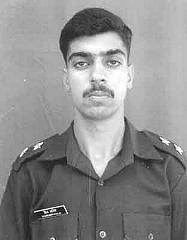30 November 2012, 02:10 PM IST
In his 2012-13 Budget speech, Finance Minister Pranab Mukherjee said the government would restrict subsidies to "two percent of GDP". Can it?
GDP in 2012-13 is estimated at Rs.101 lakh crore. Two percent of that is just over Rs.2 lakh crore. If the government sticks to the Budget, India's total subsidy bill should be no more than Rs.2.02 lakh crore. Let's do the math.
There are four broad categories of subsidies: food, fuel, fertilizer and welfare schemes.
Food subsidies in 2011-12 totalled Rs.72,823 crore. This excludes any increases the Food Security Bill, still under review, might entail.
Fuel subsidies, including LPG cylinders, diesel, kerosene and petrol amounted to Rs.49,000 crore in 2011-12. This too excludes indirect subsidies provided for on the balance sheets of oil marketing companies (OMCs) like Hindustan Petroleum and Bharat Petroleum.
Fertiliser subsidies added up to Rs.63,776 crore in 2011-12. Fertilizers comprise two basic types: urea and nitrogen-phosphorous-potash. The bill is rising and the volume of imported fertilizers exceeds Rs.12,000 crore of the total.
Social welfare subsidies on schemes like MNREGA and Bharat Nirman Yojana accounted for over Rs.47,000 crore in 2011-12. There are a total of 42 social sector welfare schemes the union government administers. The National Rural Health Mission (NRHM), for example, has an allocation in 2012-13 of Rs.20,822 crore. Thus three of the principal welfare schemes account for around Rs.70,000 crore.
Taken together, food, fuel, fertilizer and welfare subsidies amount to Rs. 3,23,000 crore – over 3% of GDP, 50% higher that the government's budgeted figure. This excludes the proposed food security bill and the controversial formula to measure the number of people living below the poverty line.
Now slice the numbers.
Finance Minister P. Chidambaram has confirmed that, due to complex logistics, food and fertilizer subsidies will be kept out of the direct cash transfer scheme to be executed through Aadhaar. Thus around Rs.1.35 lakh crore worth of subsidies will continue to be handed out every year through a corrupt, leaky process.
Among social welfare schemes, the biggest, MNREGA, is already paid out in cash. Pensions and scholarships are also already given out in cash.
What will go through Aadhaar are principally fuel and social welfare schemes. Here too fuel will create logistical problems. LPG, diesel, kerosene and petrol consumers will have to undertake cumbersome paperwork to receive cash in the right bank account with self-certified LPG/kerosene requirements, leaving the process vulnerable to corrupt middlemen and multiple bank accounts.
The government faces two contradictory challenges. First, to restrict total subsidies to 2% of GDP as mandated in the 2012-13 Union Budget. Second, to hand out as much of the total subsidy amount as possible in cash to woo voters ahead of 2014.
The first target is clearly going to be missed. The second, without food and fertilizers – and with MNREGA and other welfare schemes already being paid in cash – is looking too small to be voter-friendly and too complicated to implement without a robust technological infrastructure.
In principle, direct cash transfers are a good way to bypass corrupt middlemen. Many countries, notably Brazil, have proved this. But without a strong backend in place, it will not work.
As several development economists, including Jean Dreze, a former member of the National Advisory Council (NAC), have have pointed out, a combination of physically-delivered subsidies, with mechanisms to cut out middlemen-fraud, and incremental direct cash transfers is the way to go till Aadhaar develops a robust technological backend.
The government's desire to rush headlong into direct cash transfers is understandable. With a Lok Sabha election looming, Aadhaar-driven cash handouts are tempting. But by putting politics above principle, the government could raise expectations among poor voters of a cash bonanza that might turn out to be – to use a currently familiar term – notional.
Follow @minhazmerchant on twitter



